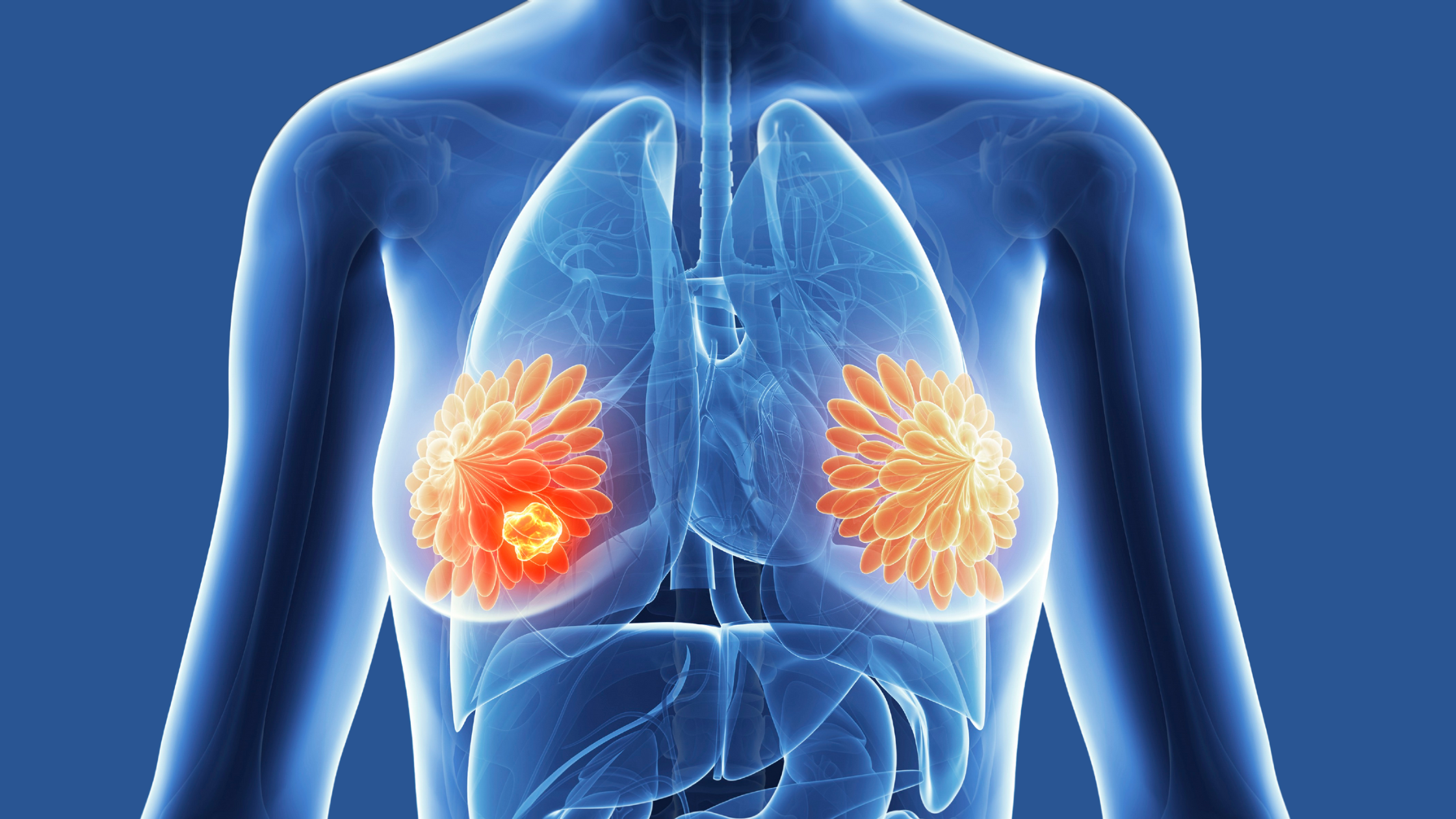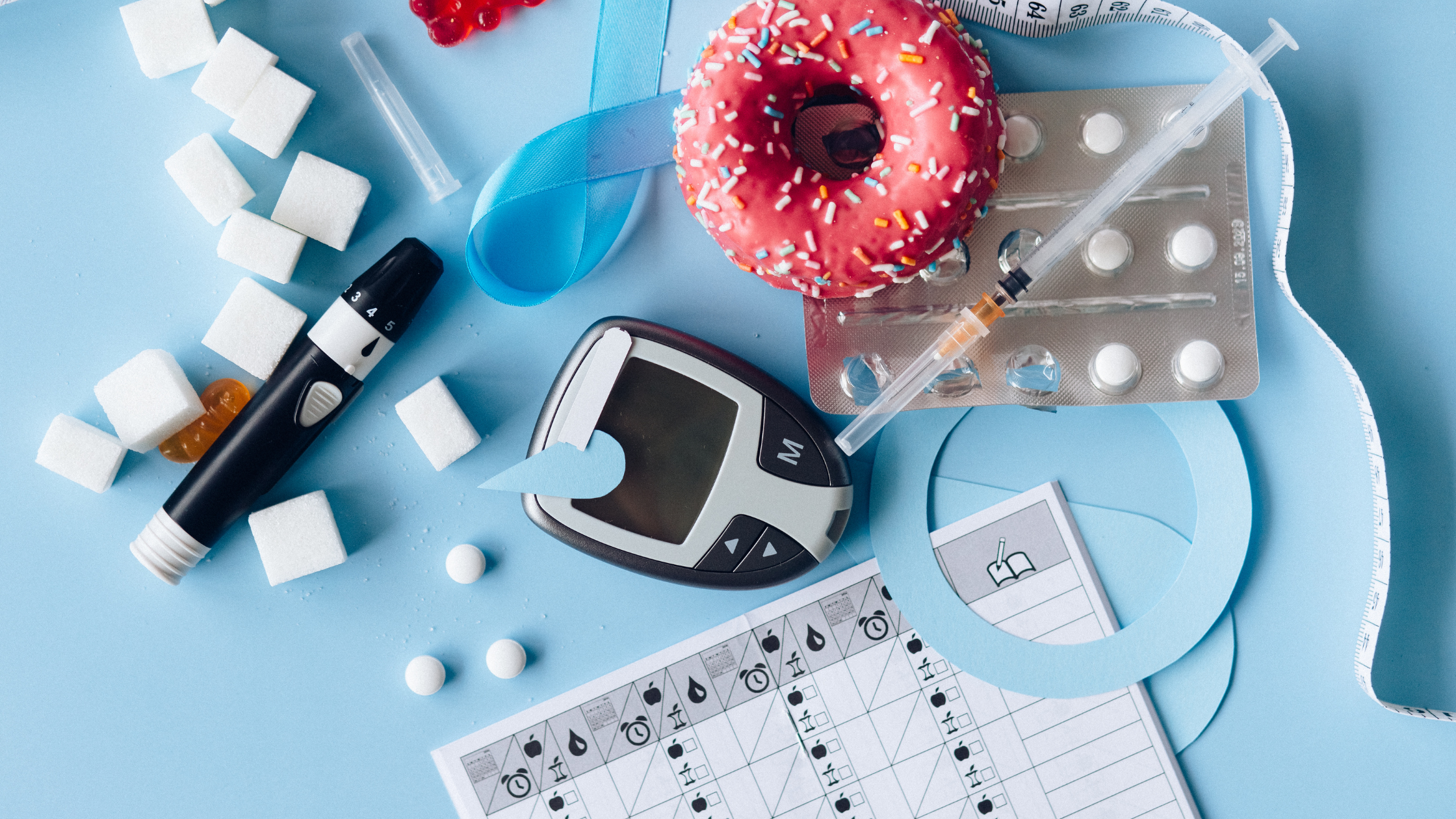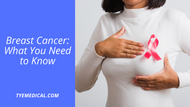Breast Cancer: What You Need to Know
Written by TYE Medical on Aug 13th 2024
Breast cancer is the most common type of cancer among women in the U.S. besides skin cancers. Each year, about 30% of new cancer diagnoses in women are breast cancer. No one wants to hear the word “cancer” or spend time researching their diagnosis online. Cancer of any type is a scary thing.
But there isn’t just one type of breast cancer. It can develop in different types of breast tissue and spread throughout the breast and beyond. Like other cancers, your diagnosis is labeled with a “stage” of cancer, usually levels one through four, with four being most severe. Regular breast cancer screenings allow your doctor to catch a tumor in its earliest stage, increasing your chances for successful treatment.
This guide provides information on breast cancer from early symptoms to types of treatment to help you feel more prepared and informed as you take on this battle against cancer.
What Is Breast Cancer?

This might seem like a very basic question, but there is more to it than you think. Breast cancer means there is a malignant tumor somewhere in your breast, and the details will determine the type and severity of cancer.
A malignant tumor means that cells have clustered together, forming a mass that grows out of control. These can move or “metastasize” to surrounding tissues or other body parts. Breast cancer can form in any of your three breast tissues, which are:
- Lobules (milk-producing glands)
- Ducts (what milk travels through)
- Connective tissue (surrounds lobules and ducts)
Cancer most often begins in the lobules or ducts but can start in the surrounding connective tissue. It’s categorized as either invasive or noninvasive. Invasive breast cancer spreads or “invades” other tissues, while the noninvasive type remains in the breast lobule or duct.
Symptoms and Signs of Breast Cancer

When you notice any of these symptoms, make an appointment with your doctor as soon as possible:
- A lump in or near your breast or armpit area
- Warm or tender breast
- A hard or swollen area in your breast
- Unexplained changes in the texture, size, color, or shape of your breast or nipple
- Skin dimples or enlarged pores on your breast
- Redness, swelling, scaliness or pain in your breast or nipples
- Nipples turn inward for no apparent reason
- Irritated or itchy breast
- A rash on your breast (a sign of inflammatory breast cancer) tenderness
If you notice a lump, don’t assume the worst. Almost 80% of all breast lumps are non-cancerous or “benign”. Common causes of benign lumps include:
- Cysts
- Changes in the fibrous tissue due to hormones
- Fatty tissue due to breast trauma
- Intraductal "papilloma" or wart-like growths
- Fibroadenomas or solid breast lump
Regardless of the type of lump you feel, you should see your doctor for a thorough evaluation to rule out a malignant breast tumor.
Breast Cancer Risk Factors

Naturally, being a woman increases your risk of breast cancer. Other risk factors include:
- Over 50 years of age
- A family history of breast cancer
- Genetics
- Previous radiation exposure
Women can develop breast cancer before age 50, but it’s less common. If you’re concerned about your breast cancer risk, your doctor can help you assess your specific risk and guide you through extra precautions or screening if necessary.
Diagnosing Breast Cancer

The most common type of breast cancer screening is a mammogram, which is an x-ray that uses low-dose radiation. This allows your doctor to see abnormalities in your breast tissue.
If your mammogram reveals something suspicious, your doctor will likely order an MRI (magnetic resonance imaging), ultrasound, or a 3D mammography to get a better look at the abnormality. This type of imaging allows doctors to see breast tissue in greater detail.
Stages of Breast Cancer

Stages describe how the cancer has grown or spread, making them stages that describe the advancement of the cancer. Stages are typically indicated by Roman numerals and have subcategories of A, B, C or D.
Stage 0: Noninvasive cancer with no evidence of leaving the area of breast it started in.
Stage 1: Cancer cells are actively spreading to breast tissue surrounding the origin of the cancer. But the tumor (group of cancer cells) is still very small and easily treated.
Stage 2: The cancer is invasive and growing but is confined to the breast or close lymph nodes. It is usually still treatable.
Stage 3: The cancer is no longer confined to the breast and nearby lymph nodes. It has begun invading other lymph nodes, muscles, or other tissues surrounding the breast.
Stage 4: The cancer is advanced and has spread to several organs or body parts. Stage 4 breast cancer is usually incurable, but you can live for several more years with treatments.
Types of Breast Cancer

Non-Invasive Breast Cancer: DCIS and LCIS
These are non-invasive cancers that remain contained within the tissue where it began and are therefore called carcinoma “in situ”. There are two types: ductal carcinoma in situ (DCIS) and lobular carcinoma in situ (LCIS). These breast cancers are usually discovered after imaging and often don’t cause symptoms.
DCIS is found in the lining of your milk ducts and has not yet spread to other tissues. But if not treated, it can invade other tissues and become more serious. Likewise, LCIS is non-invasive and is found in the lobules of your breast where milk is produced. This is usually considered pre-cancer and is less common than DCIS but is more likely to become invasive if it develops into cancer.
Invasive Breast Cancer: IDC
The most common type of breast cancer is invasive ductal carcinoma (IDC). It accounts for 80% of all new breast cancer diagnoses and is the type of breast cancer most likely to develop in men.
IDC begins in your milk ducts, like DCIS, but it doesn’t remain contained and spreads outside the duct and into surrounding tissues, even invading your bloodstream and lymph nodes.
Treatment usually involves a combination of radiation, surgery, chemotherapy, hormone therapy, targeted therapy, and immunotherapy. But the approach will depend on the specific type of breast cancer you have and its characteristics like the degree of aggressiveness. Some breast cancers lack receptors that will respond to the usual medications. This is called triple negative or HER-2 negative breast cancer. Your doctor will work to create a specialized treatment tailored to the weakness of your tumor type.
Breast Cancer Outlook

Your prognosis will depend upon how healthy you are and the stage of breast cancer you’re in. However, it’s encouraging that the death rate from breast cancer has been dropping. Most women survive this type of cancer, and 90% of women will live at least five years after their diagnosis.
Breast cancer can be recurrent, meaning that it returns after your initial treatment. This recurrence can happen months or years after seemingly successful treatment. The highest risk for recurrence is within the first two years after completing your treatment. However, most breast cancer survivors won’t have a recurrence.
Metastatic or stage 4 breast cancer that has spread to other parts of your body is not currently curable. But with the right treatments to control its growth and spread, you can continue living a fulfilling life for years to come.
Breast Cancer Treatment Options

Your doctors will evaluate the stage and aggressiveness of your tumors. Most often, surgery is the prescribed treatment, along with secondary treatments to ensure that post-surgery cancer cells don’t survive.
Surgical options include a lumpectomy or mastectomy.
A lumpectomy means that a small portion of the breast encasing the tumor is removed. If your surgeon must remove more of the surrounding tissue, it is considered a partial mastectomy.
A mastectomy means that one or both breasts are removed. Sometimes lymph nodes and armpit tissue are removed also.
Radiation and chemotherapy are accompanying treatments that are often used post-surgery to kill any possible cancer cells that are left behind. Your doctor will recommend which treatment is best for you based on your tumor and the likelihood of cancer cells spreading.
Other treatments include medications like hormone therapy and biologic targeted therapy.
How to Prevent Breast Cancer

Of course, you can’t change all your risk factors like age and family history. But you can adjust some aspects of your lifestyle to stay healthy overall and decrease your risk of breast cancer.
Try making these lifestyle modifications:
- Don’t drink more than one alcoholic beverage per day.
- Don’t smoke.
- Maintain a healthy weight.
- Breastfeed your baby for at least several months.
- Choose non-hormonal treatments for menopause symptoms.
- Avoid radiation exposure (get medical imaging only when necessary)
The Battle with Breast Cancer
Breast cancer can be complex, especially if not diagnosed in its earliest stages. Regular preventative screenings like self-exams and mammograms are necessary for early detection. Most breast cancer will spread if not treated in a timely fashion. Surgery is the most common treatment method and may be accompanied by radiation or chemotherapy. If you notice and change the appearance or feel of your breasts, contact be sure to get in touch with your physician. You can reduce the risk of developing breast cancer when you limit alcohol, radiation exposure, and maintain a healthy weight.


